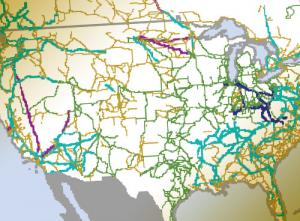Emerging Cost Advantages
Robert McCullough is principal of McCullough Research. Eric Shierman and Michael Weisdorf are Research Associates at McCullough Research. Louis Bengtson was a McCullough Research intern in the summer of 2018.
Since the electrification of North America commenced at the start of the last century, the industry has focused on big iron. Larger projects offered efficiency in location and economies of scale. The end of this era is rapidly approaching as smaller, more maneuverable, and less expensive options take the center stage in electric utility planning.

Until recently the competition between renewables and traditional thermal generation was easy. Renewables were expensive and traditional thermal was cost-effective with serious negative externalities.
That traditional trade-off makes less sense today as the Levelized Cost of Energy (LCOE) from wind and solar generation has now dropped below the LCOE of hydro and most thermal energy resources. Moving forward, wind and solar investments offer electric utilities the benefits of clean production at lower prices than existing choices.
For aging nuclear and coal units, renewables actually cost less than operating costs.1 Wind and solar's weaknesses are their intermittency, but they can be backed up by cheap natural gas peaker plants, and perhaps someday soon, batteries. Overall, in spite of claims by the owners of older fossil fuel units, the nation's capacity surplus is enormous.

